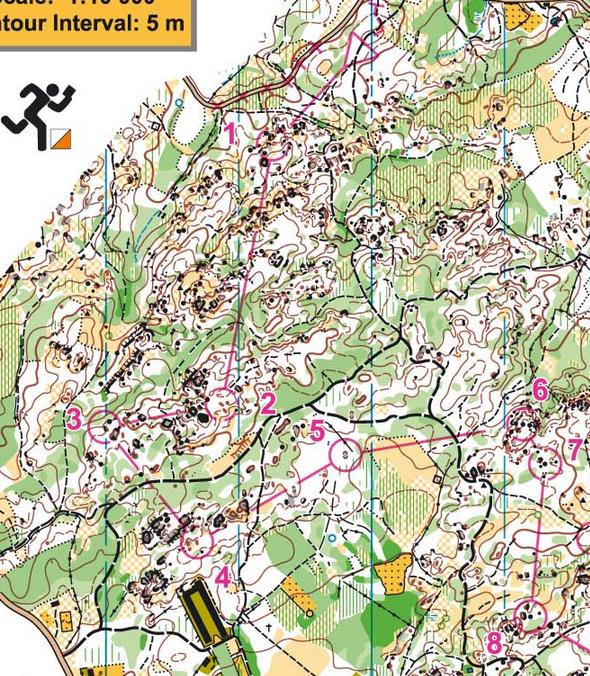
… a challenging middle distance course in technical terrain with varying visibility which was given high praise by many of the world’s top runners! Read the full interview with the course setters and see several different versions of the courses – from the early version to the final version.
All legs have a specific propose and the course wouldn’t have the same standard having more or less legs
From the first day of voting this course from the international season opening in Portugal has been on the top of the results list for “Course of the Year 2012″. Whereas the fight for the victory in “Course of the Year 2011″ was very tight, there was no doubt that Portugal O-Meeting Day 3 (WRE) would become the winner this year! The victory was nearly as clear as when Jukola won the contest back in 2010.
Congratulations to the course setter Bruno Nazário! Below follows a long interview with Bruno – read on below the results!
Results – Top 10
For the second year in a row a middle distance race wins “Course of the Year” – with a long relay winning in 2010. As in 2011, most of the courses are set in non-Scandinavian terrain. This year the first long distance is in 5th spot (JWOC long), and the first Scandinavian course is down in 9th place (Norwegian Championships Ultralong). Congratulations to all course setters and courses!
| 1. Portugal O-Meeting 2012: Day 3 Middle 20000 points |
 |
| 2. Euromeeting Middle (Men) 11980 points |
 |
| 3. BriO Tour 2 – Disneyland Paris, France 11680 points |
 |
| 4. Venice Street Orienteering 2012 8800 points |
 |
| 5. JWOC 2012 Long (Men) 8790 points |
 |
| 6. 11th Liga Norte Urbasa – Rock Labyrinth 7980 points |
 |
| 7. JWOC 2012 Middle (Men) 7950 points |
 |
| 8. Barrens Middle Distance training 2012, Canada 7370 points |
 |
| 9. Norwegian Champs Ultralong 2012 6900 points |
 |
| 10. Cave orienteering Les Mines du Roi Salomon 6590 points |
 |
Interview: Course setter Portugal O-Meeting Day 3 2012
Below follows an interview with the course setter of the winner of “Course of the Year 2012″.
Q: When did you start planning the courses for POM 2012 Day 3 – and how many hours do you think you spent on it?
I was involved in all the steps of the preparation of the event
First of all let me thank everyone that voted. This is a very good poll because we have the opportunity to look at so many good courses from all around the world, and we have the chance to imagine ourselves running in some very interesting terrains.
For me planning began already at the end of 2010, after we got the appointment from the Portuguese Orienteering Federation to organize POM2012. I was involved in all the steps of the preparation of the event – from the choice of the terrain, to the choice of the map maker (Tiago Aires, one of the key elements for the success of the event ), arena location and of course the course setting.
But the real planning began on September 2011. It is quite difficult to calculate the amount of hours I spent planning, since I was the course setter for day 1 and day 3 – a total of 56 courses for POM2012, but I think that for day 3 I should have spent around 120 hours.
Q: Did you have to do many compromises due to the spectator control?
Having a spectator control gives value to the course, since it is a situation that creates pressure for the runners
I can’t say I have, because since the beginning I was certain that I would have a spectator control and an arena pass throw. With all the talk about making orienteering visible, the first thing we have to guarantee it that the spectators that go to the arena can have the chance to see the runners live for more than just the run-in.
Besides that, from the course setting point of view, having a spectator control gives value to the course, since it is a situation that creates pressure for the runners and eventually leads them to mistakes. Knowing how to deal with these types of situation is something that top athletes should be capable off. All in all I think that the scheme that we used was very good. All persons at the arena could really feel the emotion of the race, seeing the times getting better and better, with the big highlight being the arena pass-through of Olav Lundanes, Matthias Kyburz, Daniel Hubmann and finally Thierry Gueorgiou.
Q: What is your favourite leg in the course – and why?
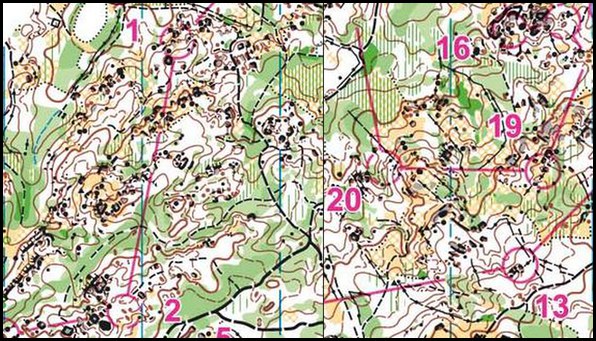
As for leg number 20, it is a typical last part of the course leg where you can loose a race.
Honestly I like then all! All legs have a specific propose and the course wouldn’t have the same standard having more or less legs, but if I have to establish the top 2 legs I would name leg number 2 and leg number 20.
The first draft of the course I had before going into the terrain, only had the first control and the last loop after the spectator control. The first leg I wanted short and relatively technical so that the runners did not had time to prepare much of the course.
Leg number 2 is the result of understanding the difficulty of the terrain in that area. I realized that a longer leg in that area would result in some difficulties in navigation, since you could easily lose a bit of direction going throw the green.
As for leg number 20, it is a typical last part of the course leg where you can loose a race. At this point the pressure is high, runners are running at full speed and although this is a short leg, the green makes it a bit unsure to run straight to the control without having a proper attack point. I think the key for this leg was to attack the point coming from the top of the hill, then taking the spur to the control. Some important runners lost time on this leg.
Q: Have you got the possibility to share earlier variants of the course – to show how the course developed?
I don’t have all early versions of the course, but honestly the course did not change that much during planning. You can see the last 4 versions of the course below. The only changes where regarding the position of control number 2 and regarding the approach to the spectator control. The first draft did not have the short leg before the spectator control, but we considered it better to have it to create an extra pressure point near the arena.
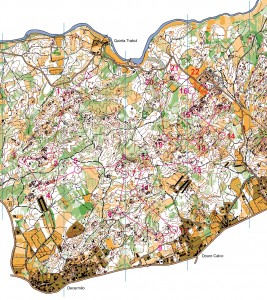
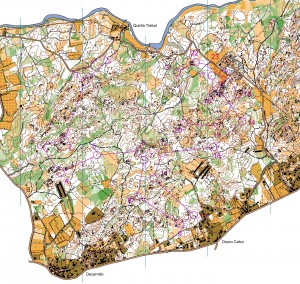
Q: What is the best course you have planned?
I guess I should say this one!
It is difficult to say, since most of the courses I set are for training and those ones have specific goals. But considering only the courses that I have done for competitions I would say this one and also the course for POM2007 in Campo de Anta [see course below] – different type of terrain but really nice to navigate in!
At the time I only knew Thierry from seeing him at competitions winning medals and it was a pleasure when he congratulated me for the course setting.
Q: Where should World of O’s readers travel to experience your courses in 2013?
Well they should come to Portugal and try some training camp courses. I manage the training for O-Portugal and would welcome all of you to try some of our demanding courses. We will have trainings near the sea, between Figueira da Foz and Aveiro and probably also some training maps available for POM2013.
Q: What is your work flow as a course setter? How do you start?
Like I told before most of the courses I set are for training and the flow is different when you’re planning for a competition and for training.
In a way I prefer the challenge of setting courses for technical training because the number of variables that you can manipulate is so big that you always can achieve your propose goal. A good example of this is the course that Thierry made in Ireland. For an event I normally start by doing the most difficult of all courses – the Men and Women 10. For example, the start of the POM2012 day 3 was determined by the course of the younger classes, since it was the best location I could find to make proper courses for those age classes.
After that I try to make the most of the terrain I have, trying to make the runners use as many navigation techniques as possible, always minimizing the unnecessary and useless legs
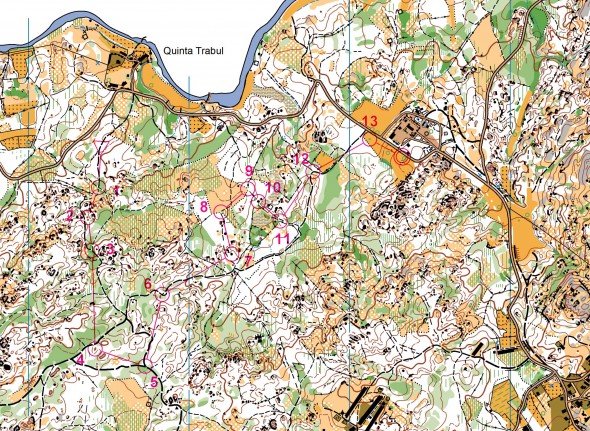
Illustration: Course for M12/W12 on POM 2012 Day 3.
Q: What is your best tip for setting a good course?
In Portugal we have a saying – “you cannot make omelets’ without eggs” – so the best tip for a good course is to choose the right terrain.
Without it you can draw an OK course but never a really good one. So the best advice is to search for the proper terrain for the event in question, adjusted to the type of course – a middle distance, long distance or sprint. Then, like I told before, maximize what you have. For example, in the middle distance – my favorite discipline – I always try to have a correct balance between short and long legs, have a balance between fast and difficult legs (to make the runner adjust the speed to the navigation difficulty) and try to create stress situations (by using spectator controls, arena pass-troughs, etc…).
Q: What was the best course you run in 2012 – and why?
Well I think all the other Portuguese nominated course are quite good, but to be fair to then all I would not name any of them.
I split my choice between two courses I managed to run while coaching the National team:
- Short long distance in Soria – really nice area to run in, with a nice course that had some route choices and some challenging navigation legs.
- Middle distance training in Switzerland – Bois de La Pile, course made for the Swiss middle distance selection race. Nice and varied course, in a technically interesting area.
Q: What is your biggest success as a runner?
I was several times National Champion in the younger classes – M18/M20 and represented Portugal in 2 JWOC’s – 1998 and 1999. When moving to the senior class I had an injury in my patellar tendon and ended up dedicating myself to coaching. Anyway, these younger runners that we have nowadays in Portugal are much better than what I was.
Q: What can you tell about your job as a trainer?
Well I only have a part time job (about 15%) as National Team coach and do individual coaching for some athletes, like Diogo Miguel (33rd at WOC Long distance this year) or Luís Silva (won JWOC heat C middle distance qualification).
I’ve been involved with the National Teams since 2005, primarily as a youth coach where we managed to get the first medal in an International competition. Then I was coach of the junior team in 2009 and moved up to the senior squad in 2010, where results are gradually getting better. When your life is sport and you enjoy coaching, getting the chance to be National Team coach is always a dream. However I cannot say that it is an easy job doing it in Portugal since the financial limitations don’t allow us to do all that we know is needed to get relevant results. So in a way I would like to have a different opportunity to fully express my capabilities as a coach.
In the mean time I’ll continue to pursue my personal goal of improving myself as a coach and by doing that try to influence as many runners as possible. Eventually I can live to see my lifelong dream of seeing a Portuguese runner at a podium in a WOC.
Prizes from our Sponsors
Prizes from our Sponsors always makes it more fun! There will be a prize for the first one suggesting the course which ends up becoming “The course of the Year 2012″, and prizes drawn among the ones suggesting and voting. All prizes are transferable to other persons (you don’t have to travel yourself).
MOC 2013
- Prize offered: Hotel + entry package for 2 persons (4 nights accommodation in Hotel Formula B&B + entry fee for MOC 2013+PWT in Matera, value about 600 Euro).
- LET’S ROCK in MOC- Matera 2013! The Mediterranean Open Championship Orienteering 2013 is organized March 15th – March 17th. Great events with world class runners!Read more
Orievents Training Camps
- Prize offered: Training package with accommodation for 2 persons (6 trainings + 3 days of accommodation in half board at Castelo de Vide Hotel)
- Orievents / GD4C’s Training Camps – Alto Alentejo – are an excellent training opportunity for Orienteering of good quality during the winter. The TC will have the technical support of Eva Jurenikova. Start the new season in training camps in Alto Alentejo, Portugal! Read more
Bubo Cup 2013
- Prize offered: “Family” entry package (Entry for 4 persons for complete Bubo cup, transferable to other people)
- Bubo cup is a new 5 Day orienteering event in Slovenia – with the same quality you are used to from OOCup. The 5 day event taking place from 19th to 23rd of July 2013 will take you through some great orienteering areas in the western part of Slovenia – from Karst terrain above the world famous Postojna cave to the Trnovski gozd plateau (which was the venue of unforgetably tough OOCup 2011). The venue of the mid stage will be Vipava, an old little town in Vipava valley. Read more
Fjord-o Arctic Midnattsolgaloppen 2013
- Prize offered: Entry package for 2 persons (Entry for 2 persons for complete Fjord-O Arctic week)
- Fjord-o Arctic Midnattsolgaloppen is the biggest and most popular event which is regularly organized north of the polar circle. Fjord-o is known for its mix of interesting orienteering with spectacular nature between fjords and mountains. Fjord-o 2013 is organized from June 29th until July 3st 2013. This year it will take place in the Harstad-region. Read more
Nice Holidays 2013
- Prize offered: 2 packages – each consisting of entry fee + accommodation for 2 persons (Entry fee + accommodation in campsite for 2 persons)
- Nice holidays are traditional 2-days, 3-stages orienteering competition organised by TJ Turnov orienteering club in beautiful sandstone terrains of Bohemian Paradise since 1992. Come to the Czech Republic and enjoy challenging middle distance, tricky sprint and tough long distance in hilly sandstone terrain. We are looking forward to seeing you from 23rd to 25th August 2013 in Turnov, Czech Republic. The competition has a limit of competitors set by natural park management usually to max 1000 runners. This year it was sold out in two months. Read more
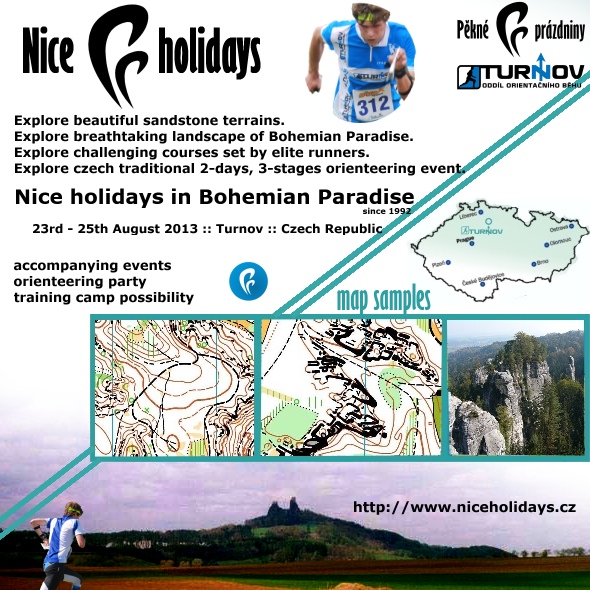
For the record: All sponsor gifts/income related to “The Best Course of 2012″ goes directly to the WorldofO.com readers.
 World of O News
World of O News
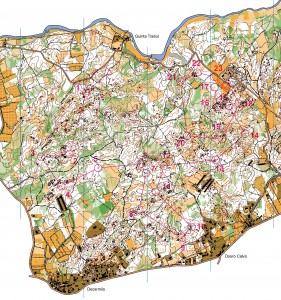

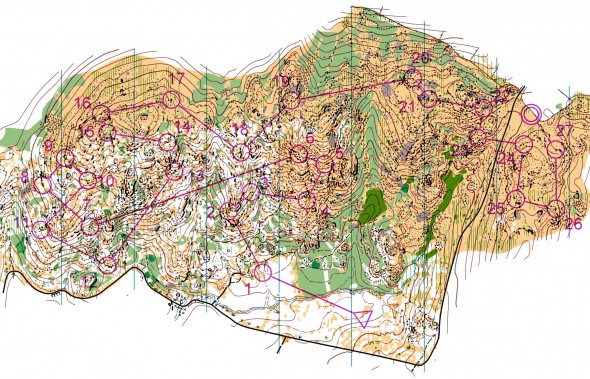


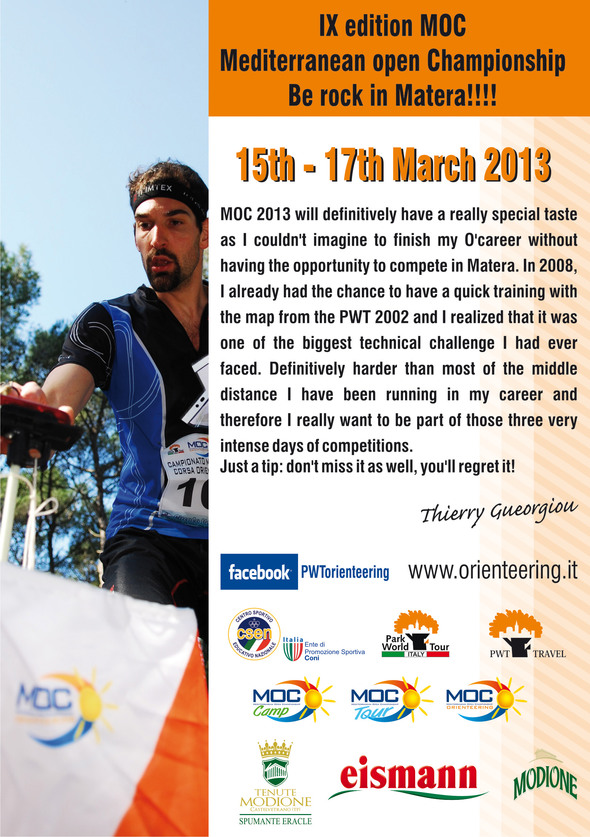
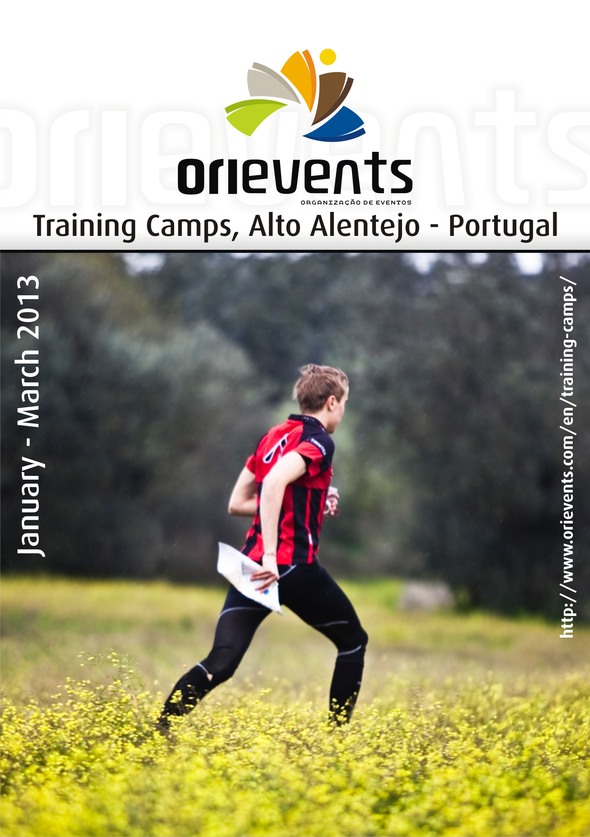
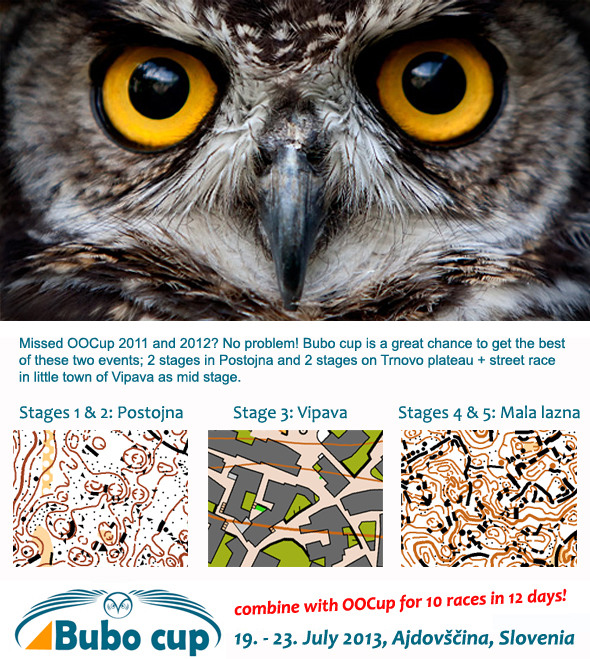
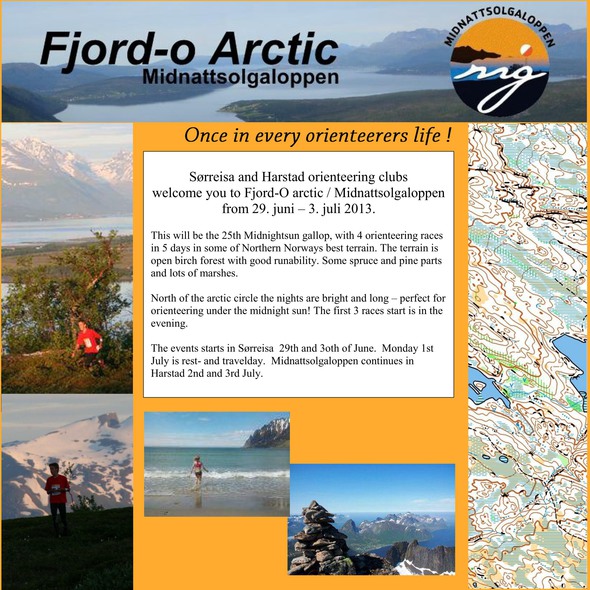
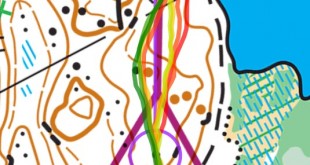
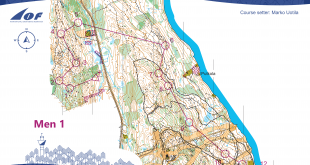
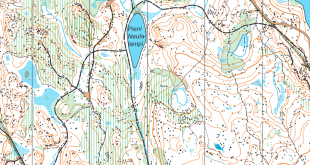
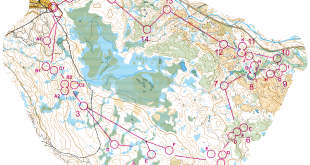
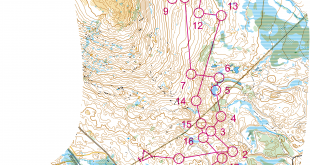
Congrats from Elodie and Benoît Course setters of the year 2011 ! ;)
can we see full ranking somewhere?
@sim: Sorry, the full ranking is not published..